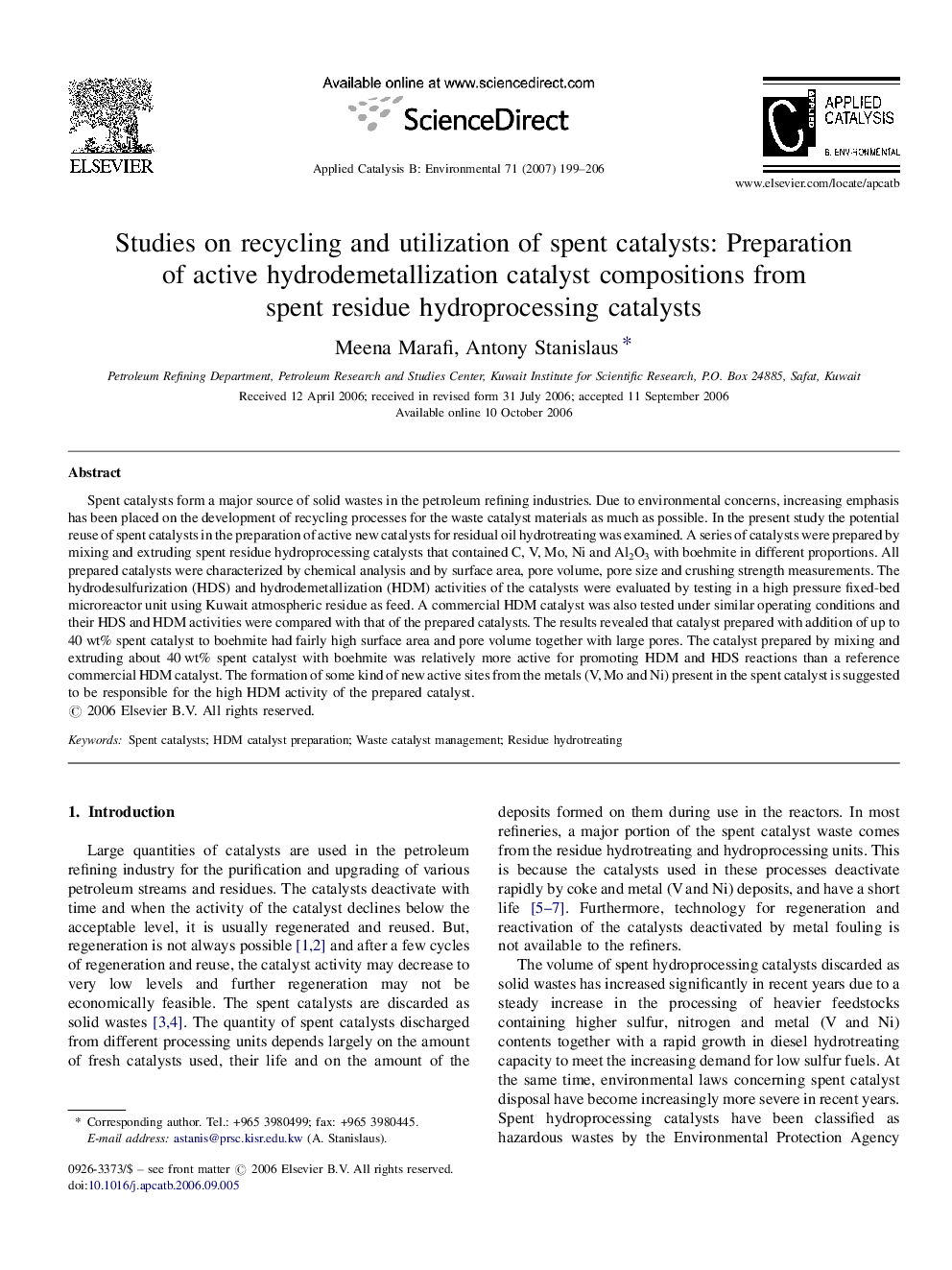| Article ID | Journal | Published Year | Pages | File Type |
|---|---|---|---|---|
| 48982 | Applied Catalysis B: Environmental | 2007 | 8 Pages |
Spent catalysts form a major source of solid wastes in the petroleum refining industries. Due to environmental concerns, increasing emphasis has been placed on the development of recycling processes for the waste catalyst materials as much as possible. In the present study the potential reuse of spent catalysts in the preparation of active new catalysts for residual oil hydrotreating was examined. A series of catalysts were prepared by mixing and extruding spent residue hydroprocessing catalysts that contained C, V, Mo, Ni and Al2O3 with boehmite in different proportions. All prepared catalysts were characterized by chemical analysis and by surface area, pore volume, pore size and crushing strength measurements. The hydrodesulfurization (HDS) and hydrodemetallization (HDM) activities of the catalysts were evaluated by testing in a high pressure fixed-bed microreactor unit using Kuwait atmospheric residue as feed. A commercial HDM catalyst was also tested under similar operating conditions and their HDS and HDM activities were compared with that of the prepared catalysts. The results revealed that catalyst prepared with addition of up to 40 wt% spent catalyst to boehmite had fairly high surface area and pore volume together with large pores. The catalyst prepared by mixing and extruding about 40 wt% spent catalyst with boehmite was relatively more active for promoting HDM and HDS reactions than a reference commercial HDM catalyst. The formation of some kind of new active sites from the metals (V, Mo and Ni) present in the spent catalyst is suggested to be responsible for the high HDM activity of the prepared catalyst.
